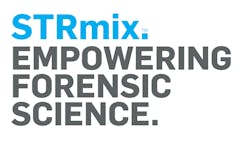The Alabama Department of Forensic Sciences Is the Latest to Use STRmix™ to Interpret Crime Scene Evidence
WASHINGTON, DC (2/21/23) --- The Alabama Department of Forensic Sciences (ADFS) is the latest organization to announce its plans to use STRmix™ in scientific testing of crime scene evidence.
Launched in 2012 as sophisticated forensic software capable of resolving mixed DNA profiles previously regarded as too complex or degraded to interpret, STRmix™ has generated a highly successful track record, producing usable, interpretable, and legally admissible DNA evidence in more than 380,000 cases to date.
“STRmix™ has proven to be particularly effective in resolving violent crime and sexual assault cases, as well as cold cases in which evidence originally dismissed as inconclusive was able to be reexamined,” explains STRmix™ co-developer John Buckleton DSc, FRSNZ, Principal Scientist at the New Zealand Institute of Environmental Science and Research (ESR).
The Alabama Department of Forensic Sciences is one of the nation’s oldest crime laboratories. Formed in 1935, the Department is the only accredited forensic service provider within the state of Alabama and provides analytical services in Forensic Pathology/Death Investigation, Drug Chemistry, Toxicology, Firearms and Tool Marks Identification, Forensic Biology/DNA, and Implied Consent in all 67 counties of Alabama.
The addition of the ADFS brings the total number of organizations using STRmix™ to 77 in the United States – including those operated by the FBI and the Federal Bureau of Alcohol, Tobacco, Firearms and Explosives (ATF) – and 103 worldwide. Internationally, STRmix™ is now being used in all nine state and territory forensic laboratories in New Zealand and Australia, as well as in forensic labs throughout Europe, the United Kingdom, Asia, the Middle East, Canada, and the Caribbean.
STRmix™ works by assessing how closely multitudes of proposed profiles resemble or can explain an observed DNA mixture. Applying the same statistical methods routinely used in computational biology, physics, engineering, and weather prediction, STRmix™ calculates the probability of the observed DNA evidence by assuming the DNA originated from either a person of interest or an unknown donor. These probabilities are then presented as a likelihood ratio (LR), inferring the value of the findings and level of support for one proposition over the other.
Late last year, the STRmix™ team launched version 2.10 of its forensic software following extensive technical development and testing. STRmix™ v2.10 contains a number of new features, including the introduction of a Visualize Weights module to help forensic analysts investigate DNA interpretation results and additional improvements to dropout modelling which will allow crime labs using FaSTR™ DNA to set a low, or even no, analytical threshold.
FaSTR™ DNA, which was also developed by the STRmix™ team, seamlessly integrates with STRmix™ (when in use) to rapidly analyze DNA profiles and assign a Number of Contributors (NoC) estimate.
In addition to STRmix™ v2.10 and FaSTR™ DNA, the STRmix™ team developed and previously launched DBLR™, an application that when used with STRmix™ allows forensic labs to undertake superfast database searches, visualize the value of DNA mixture evidence, and carry out mixture-to-mixture matches and extensive kinship analyses. Together, FaSTR™ DNA, STRmix™, and DBLR™ complete the full workflow from analysis to interpretation and database matching.
For more information, visit http://www.strmix.com.



